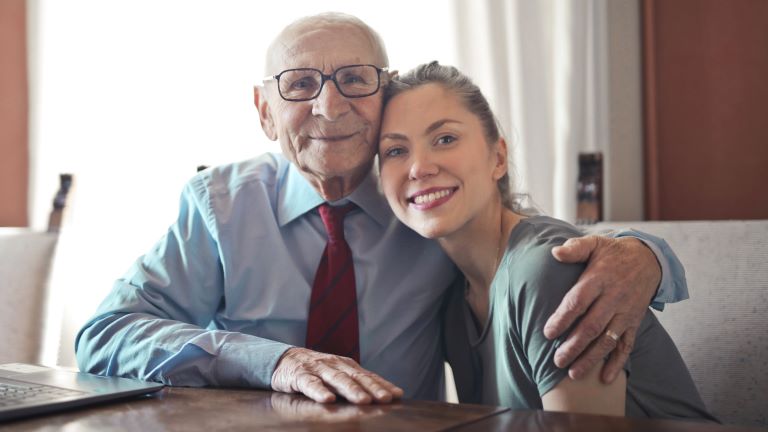Considering opening a business with your significant other? You’re not alone, because 1.2 million U.S. small businesses are owned by husband-and-wife duos, according to Score.
A couple that makes money together stays together. See the best business ideas for couples that will fill your heart and pockets. Get ideas here.
1. Café or Small Restaurant
One of the classic business ideas for couples is opening a café or a small restaurant. If one of you loves cooking and the other has a knack for customer service or management, this could be
a perfect match. It’s a business that allows for creativity, community engagement, and the joy of bringing people together over good food. Restaurants can come with expensive startup fees and long hours.
2. Bed and Breakfast
Running a bed and breakfast can be a lucrative and enjoyable business opportunity for couples who love hospitality and have a charming property. It’s a great way to meet new people, provide a unique travel experience, and work from the comfort of your own home. If you’re using your own property, you’ll have to get used to having people around your home all the time. And if you’re not using your property, you’ll have to invest in one, which is expensive.
3. Online Retail Store
E-commerce is booming, and starting an online retail store is one of the more flexible business ideas for couples. Whether selling handmade goods, curated collections, or drop-shipping, the online space offers vast opportunities with relatively low startup costs.
4. Fitness Studio or Gym
If fitness and wellness are your passion, opening a studio or gym can be fulfilling and profitable. This venture allows you to share your love for health and wellness with others while building a community around your brand.
5. Property Investment
Real estate and property investments present a lucrative opportunity for couples. Whether flipping properties to sell or managing rental properties, this sector offers significant income and capital growth potential. It’s a business that benefits from the combined skills of negotiation, renovation, and property management. For couples, this can be an exciting venture as it allows for creativity in design and strategy in investment, making it one of the more dynamic business ideas for couples. But, as with the bed and breakfast, buying properties requires a hefty initial investment.
6. Homecare Franchise
A homecare franchise is among the best business ideas for couples, especially those seeking a purposeful and profitable venture. It combines the opportunity to make a significant impact in your community with the potential for financial success. The AARP states that 10,000 people turn 65 every day in the U.S., so the need for in-home senior care will only continue to grow for decades to come.
Why Invest in a Franchise?
Franchising offers a unique blend of entrepreneurship and support, making it an attractive option for couples. When you choose a franchise, you’re not just starting a business; you’re joining a proven system with established processes, branding, and support. International Franchise Professionals Group (IFPG) discusses how there’s typically a lower failure rate in franchising compared to starting a business from scratch. This is because of that proven business model, support, and brand recognition.
Benefits of Franchising as a Couple
Running franchises for couples has several advantages over going it alone. As a team, you can divide responsibilities based on your strengths, offer each other support during challenges, and share the joys of success. This partnership can lead to a more balanced work-life dynamic and a deeper understanding of the business from multiple perspectives.
As a couple, you typically have a stronger bond and a deep respect for each other that helps provide better communication. Business News Daily explains that excellent communication can be a couple’s most valuable tool during business ownership.
Why Choose Homecare?
Among various franchises for couples, a homecare franchise is particularly appealing for several reasons. First, the industry is rapidly growing in demand. With the aging population, the need for in-home care services will only increase, making it a sustainable business choice. More specifically, Fortune Business Insights finds that the U.S. home healthcare services market was worth $94.17 billion in 2022 and is predicted to grow to $153.19 billion by 2029.
Running a homecare franchise often requires a blend of skills – from management and caregiving to marketing and customer service. Couples can leverage their diverse skill sets for greater success. In addition to the transferable skills, homecare franchisors, like A Place At Home, offer extensive training and ongoing training to help prepare you for opening and guide you through the years.
A homecare franchise allows you to make a real difference in people’s lives, providing a sense of purpose and fulfillment that’s hard to find in other businesses. Along with the moral benefits, a senior homecare business can offer more flexibility than traditional businesses, allowing you and your significant other to manage your work-life balance.
A Place At Home: A Top Choice for Couples
A Place At Home stands out as one of the best franchises for couples and among senior care businesses. We offer a comprehensive range of senior-focused care services, including in-home care, care coordination, senior living alternatives, and staffing solutions, designed to provide personalized guidance throughout the aging journey for the seniors in your community.
By joining A Place At Home, you become part of our family of franchisees that values integrity, compassion, and excellence. You’ll receive training, support, and the tools you need to build a successful business that makes a real difference in your community.
Several of our franchisees are husband-and-wife duos like Stacy and Brian Eisenberg, owners of A Place At Home North Austin.
“A Place At Home for me means us being home together, working together. A chance for her to be at home and foster the care that she’s always had and bring that into her own business. I’m excited to build a business with Stacey around her passion and knowledge,” said Bryan.
Ready to learn more about the A Place At Home franchise? Fill out our form to connect with us.










